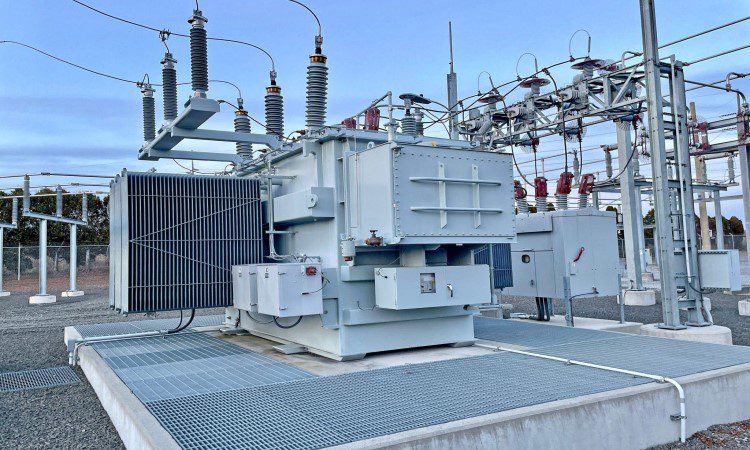Sierra Leone
Kabala-Fadugu, Kailahun-Kenema, Pujehun, Kambia-Port Loko Towns
Engineering
Feasibility Study
Engineering Design
EDSA / World Bank
- Incomplete
July, 2022
Ongoing
$75 Million (USD)
Have a project in mind?
Consultancy Services for Improvement of Electricity Supply in Urban Areas. Sierra Leone Distribution Project- power line optimization design with GOPA - Intec.
- Addendum No. 2 – Topographical Survey, Geotechnical Investigation and Environmental Scan
- Addendum No. 3 – Technical Assessment and Network Analysis for 161kV Freetown Substation.
Sierra Leone has one of the lowest electricity access rates in the world. According to the information provided by Electricity Distribution and Supply Authority (EDSA), as of end 2019, there were about 178,100 households across the country which are connected to and served by the main grid and isolated grids EDSA owns and operates. It represents about 14 percent of the total 1,248,000 households in the country. As the main grid and the isolated grids only serve Freetown area and some district headquarter towns, almost all these households are considered as urban.
Improving access to electricity in Sierra Leone is a critical development accelerator. This project will help address the country’s key infrastructure deficits, which is one of the most fundamental elements for pro-moting sustainable growth and job creation in the COVID-19 recovery.
This overall project “Improvement of Electricity Supply in Urban Areas” aims at the necessary reinforcement of the Sierra Leone’s power system to establish an efficient sub-transmission and distribution system coping with the requirements while reducing system losses.
The project is aimed to provide grid and improved electricity services to nine major towns and surrounding communities by capitalizing on the availability of electricity through the imports over the CLSG (Côte d’Ivoire – Liberia – Sierra Leone – Guinea) interconnection.
This would also support sustainability and reducing carbon dioxide emission to a minor extent. Another main objective introduced by Ministry of Energy (MoE) is to reduction of energy poverty and contributes to rural economic development.
GOPA-intec in Association with CEMMATS Group Ltd (the Consultant) were tasked to provide engineering consulting services for a project which is intended to provide new and improved electricity services to nine major towns and surrounding communities in Sierra Leone.
The information received by the Consultant’s from EDSA while visiting Sierra Leone was used for the designs. The geotechnical and topographical surveys were also used as inputs to the consultant’s PLSCAD power line designs. The project included the following:
- Design, procure and construct a single circuit 33 kV distribution line of about 35 km, including substation with a 15 MVA 33/11 kV transformer, connecting the distribution network in Kabala with the 225/33 kV Fadugu substation of the CLSG line.
- Design, procure and construct a single circuit 66 kV sub-transmission line of about 100 km, including substation with a 66/33/11 kV transformer of 20 MVA, connecting the distribution network in Kailahun with the 225/66 kV Kenema substation of the CLSG line.
- Design, procure and construct a 33 kV line of about 25 km connecting the distribution network in Pujehun with the CLSG line.
- Carry out a feasibility study and preliminary design of the single circuit 33 kV distribution line of about 55 km, including substation with a 15 MVA 33/11 kV transformer, connecting the distribution network in Kambia with the 225/33 kV Port Loko substation of the double circuit 225 kV Fadugu-Freetown line.
The consultant reviewed the specifications and technical performance criteria received from EDSA to be comprehensive. The designs described in this report was used as inputs for the design specifications for the works described in this project.
- The designs described in this report was used as inputs for the design specifications for the works described in this project.
- The control and protection design conformed to EDSA requirements and the schemes as described in this report will provide the required level of protection for the various network configurations.
- Fibre optical communication via OPGW on the overhead 66kV and 33kV lines bring with it the opportunity to employ differential protection, alternatively permissive protection schemes featuring accelerated tripping for zone 2 faults. These schemes require reliable fibre communications between the local and remote ends of the respective feeder bays. These options are described in the report and the consultant would like to note that should the client opt for such a protection scheme, protection/communication equipment at the remote end of the respective feeder bays at existing substations might have to be upgraded in order to implement such a scheme.
- The consultant wishes to draw the client’s attention to the arc flash detection as an alternative option proposed regarding 33kV busbar protection. This will be a cost-effective solution in the interim, until the substations are expanded to their full busbar configuration.

